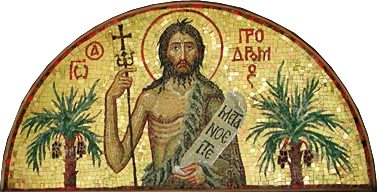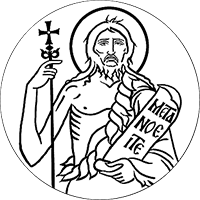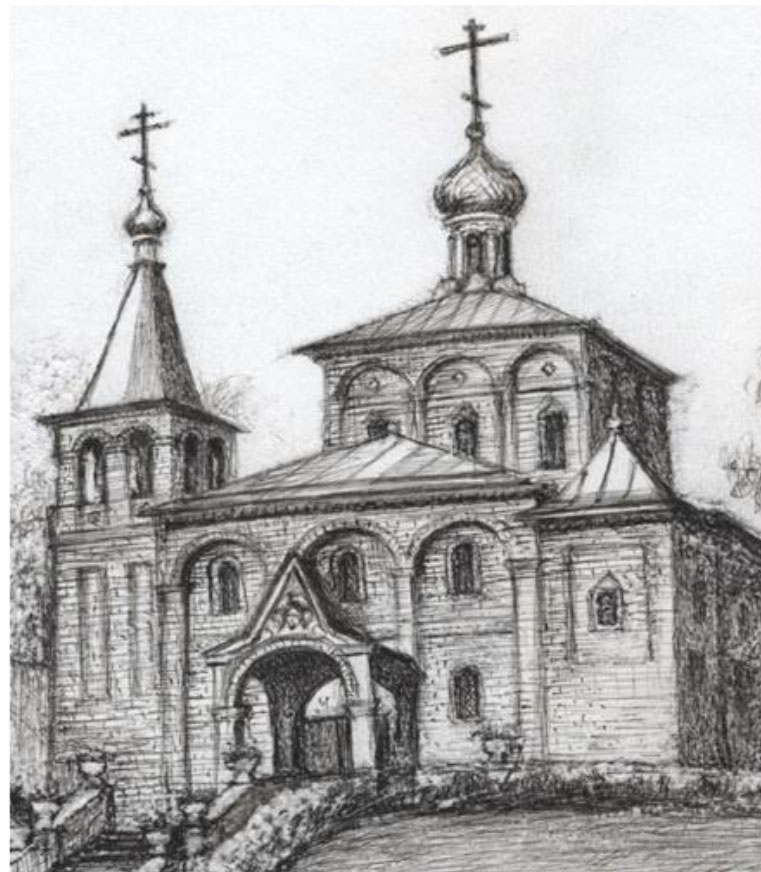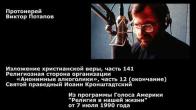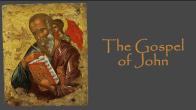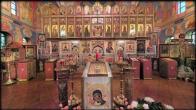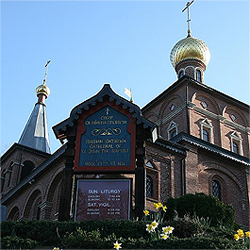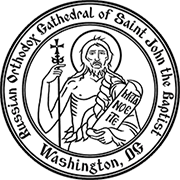Иосиф Муньос-Кортес
Jose Munoz-Cortez
- Jose Munoz-Cortez (1950-1997) The Chosen One of the Mother of God
- Icon of Brother Joseph
- Interviews with Brother Joseph
- The trial of the murderer of Brother Joseph Munoz-Cortes
- Reactions to Brother Joseph's Murder
- Pilgrimage to Brother Joseph's Grave
- Remembering Brother Joseph
- Accounts of Miracles from the Iveron Myrrh-streaming Icon of the Mother of God and Brother Joseph
- Videos about Brother Joseph
- A new copy of the Montreal Iveron Icon of the Mother of God
You are here
Interview with Irina Rusanov
published on the website www.fotopalomnik.ru. The interview first appeared in the Orthodox newspaper Blagovest.
* * *
You were well acquainted with Jose Munoz, keeper of the Montreal Iveron Icon. Tell us about him.
Earlier, we did not know that he had been secretly tonsured a monk with the name Ambrose. We were fairly close acquaintances, and I held him in high regard. Every time we met, he would say, with a strong Spanish accent (he spoke English poorly) the same thing, "Irina, I pray for you and for your whole family." And that was strange, for there were five people in my family, and he had 50 godchildren of his own! His prayer rule took him nine hours each day.
It was no accident that the Mother of God showed him such mercy?!
Oh, no! It was no accident! He was a special person. Overall, he had a very interesting life. You would never see him at Molebens [prayer services] before the icon. He was truly the most humble of people, and always stood somewhere in the back. And he was always accessible. We attended the very first Akathist, served in the lower church at the Synod, after the Icon was revealed. It was in April, 1983. The Icon streamed Myrrh; you could see streams of Myrrh pouring down… That was in New York. Jose lived in Canada. Actually, he had no place to rest. For 15 years, he traveled with the Icon throughout the world. The only place he did not go was Russia. (…) The place Jose most enjoyed visiting was Bulgaria. There, 10,000 people gathered around the Icon! Jose had never seen the like! Had never witnessed such faith! Had never encountered such a gathering of people!
Irina, could you tell us what he was like?
He had very large palms, very soft hands. Always warm. He was a kind man, and was tall. He projected an air of homey warmth. One of my acquaintances who got to talk to him only once, put it this way, "In conversation, [he made you feel that] to him, you were the most important person on earth." He had some kind of absolutely unusual, sincere, love for everyone. He was ready to help anyone. We got to the point that we were simply embarrassed to bother him. After all, he was literally being torn apart. He was in our home. And the Montreal Iveron Icon was in our home.
In California?
No, that was still in New Jersey. He invited us to come to his home, but we did not [act on the invitation] in time. He was killed. And after his death, he was slandered terribly.
How did this all happen?
Jose accepted an awful martyrdom. When his body was discovered, they saw that his mouth had been torn apart, his hands were bound, with the ropes buried deep in his swollen hands. He had been tortured. He was purity incarnate. The Mother of God herself had entrusted the miraculous Icon to him.
What was Jose Munoz' relationship with the Synod of the Church Abroad?
For many years, Vladyka Vitaly had wanted to take the Icon away from him. For some reason, Metropolitan Vitaly considered that the Icon was not [Jose's] property. This went on for a long time. Jose was very upset. And he was a sick man; he had sugar diabetes. He never condemned anyone, but he could take offense. After all, he was of Spanish ancestry. Once he told of how he was in San Francisco… The thing is, Metropolitan Vitaly was convinced that someone wanted to poison him. He trusted Jose, and asked him to do his wash. Jose said, "Vladyka, but if you are poisoned, you will have died a martyr's death." Vladyka could not understand that.
And what was the attitude of the keeper of the Icon to pilgrims who came to the Icon?
There were always a lot of people coming to him. They simply pulled him apart; everyone wanted to talk to him. He never had any money, and we once happened to say to him, "Go to Russia; we will pay your way." He always dreamed of doing that. Jose was the first to tell me that there were elders in Russia. [Others] would always assure us that there were no elders, that eldership had come to an end, and that it would not return. There was a certain Fr. Cyprian, a well-known iconographer [whose work may be seen] throughout the diaspora. I wanted to talk to him, and started to ask him questions… He said, "Irina, you are looking for elders. There are none." I remembered that: there are no elders.
But, it turns out, they do exist. And always have.
Jose lived to serve the Theotokos?
Yes. Jose would often say, "I cannot make plans. The Icon goes wherever It wants." He came to terms with that fact, and lived not according to his own will, but only according to the will of the Queen of Heaven.
What was his principal personality trait?
Patience. While he was alive, he received abuse from everyone. Someone would accuse him of using perfume, someone else would accuse him of faking [the miracle of] the Icon, of wiping the Icon with oil… They slandered him however they wished, and he was a very sensitive person. He endured all of that with the greatest of patience.
Where and how was he buried?
In Jordanville. When Jose was killed, something else that was awful transpired: Only two bishops served the funeral for him. For a man who for 15 years had nourished the entire Russian diaspora with this holy thing! A Vladyka, now reposed, came from Long Island (near Manhattan), and Vladyka Laurus, rector of the monastery, was also present. About 10 clergyman came, as did simple lay people. Ultimately, he was buried by the laity. We had gotten there a bit earlier. The coffin had just been delivered, and his body was in a body bag (…) We witnessed the opening of the bag. Initially, they had wanted to bury him in the bag, in a closed coffin. Then they opened the coffin, opened the bag, showed his face - you could not recognize him. To see all of that was difficult beyond imagining. He knew that he was to die. On the eve of his death, he and Fr. Alexander, former cell attendant to Vladyka Vitaly, visited a certain monastery, and the frescoe of the Theotokos there began to weep. That took place in Greece.
Tell us about some incident from the life of Joseph Munoz. After all, that was his Christian Baptismal name.
Once, my husband lost his job and was unemployed for six months. We were deprived of the means to cover our living expenses - we were losing our house, our car - and we took it hard. And here arrives Jose, and I remember for a long time I had wanted to make a frame for the Iveron Miraculous Icon. Jose never had any money. Whenever he would bring the icon for a Moleben and Akathist, at the end of the service the priest would always suggest to those present that it would be nice to collect a little money so that Jose could get to the next place. He did not own anything. Nothing. He would always be in a black shirt, a black jacket, and black slacks. He had a little humble apartment in Montreal. Before, he used to teach art history at a university in Montreal. Later, he left that job, and would travel with the Icon, and do a little iconography. So - I did not have money for a frame. I took off my diamond ring, and gave it to him for the Miraculous Icon. Fortunately, Jose incorporated the ring into the [riza on] the Icon, and it remained on it for many years. The most interesting thing about this was that immediately after this happened, my husband found a job!
Joseph was buried at the monastery?
Yes, at the monastery, in the local cemetery, near the chapel. They erected a black marble cross. We would come there in the Winter. It was windy, it was a drafty location, and candles in the wind should go out. But the most amazing thing was that after the Panikhida, the candles I was holding lit by themselves. And then, even when the temperature was below freezing, his cross was always warm, and at certain points, simply hot. I think that even now, he is praying for us.
PARISH LIFE
RECENT VIDEOS
Address of our Cathedral
Subscribe to our mailing list
While all the materials on this site are copyrighted, you may use them freely as long as you treat them
with respect and provide attribution on the Russian Orthodox Cathedral of St.John the Baptist of Washington DC.
